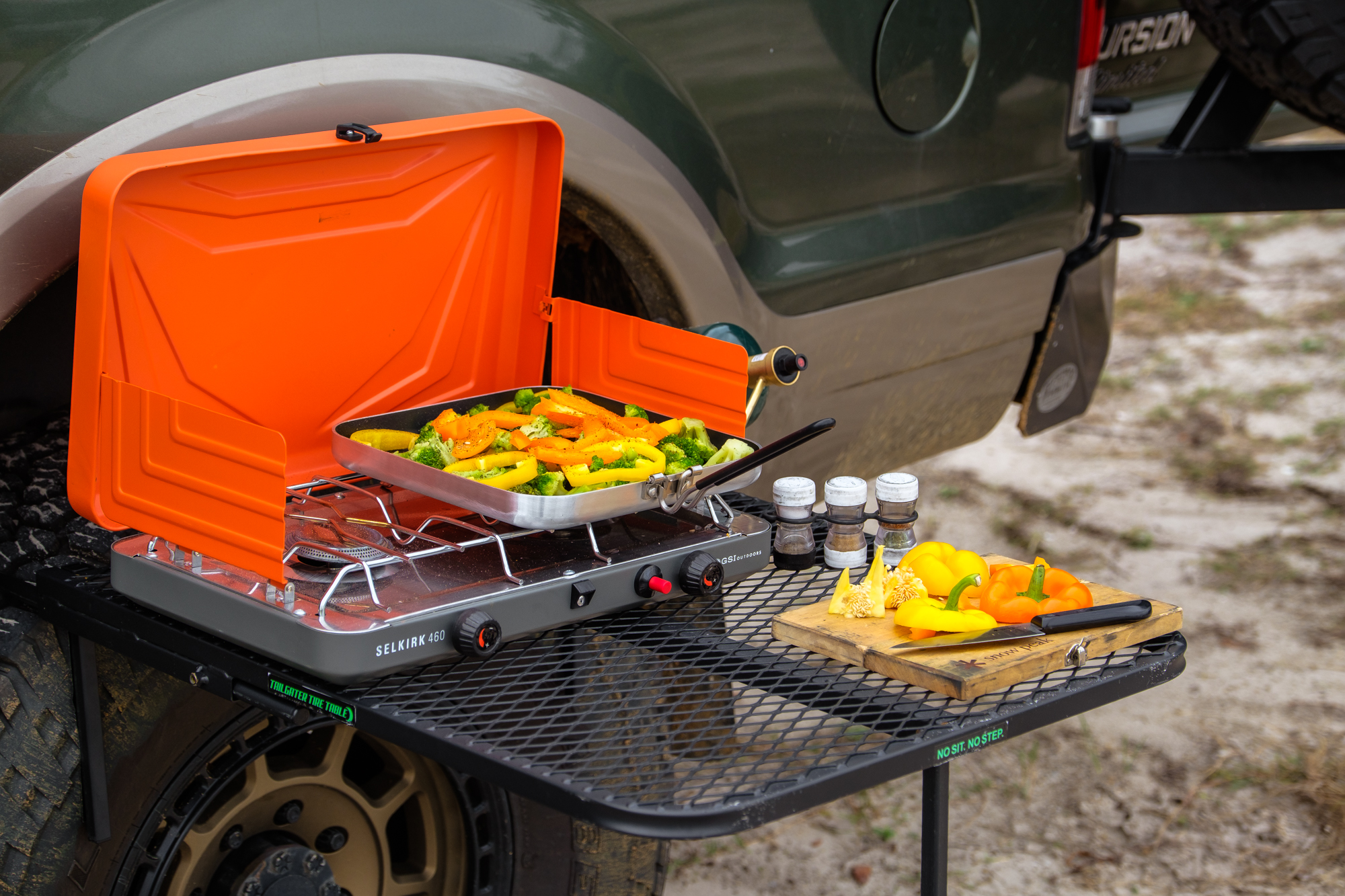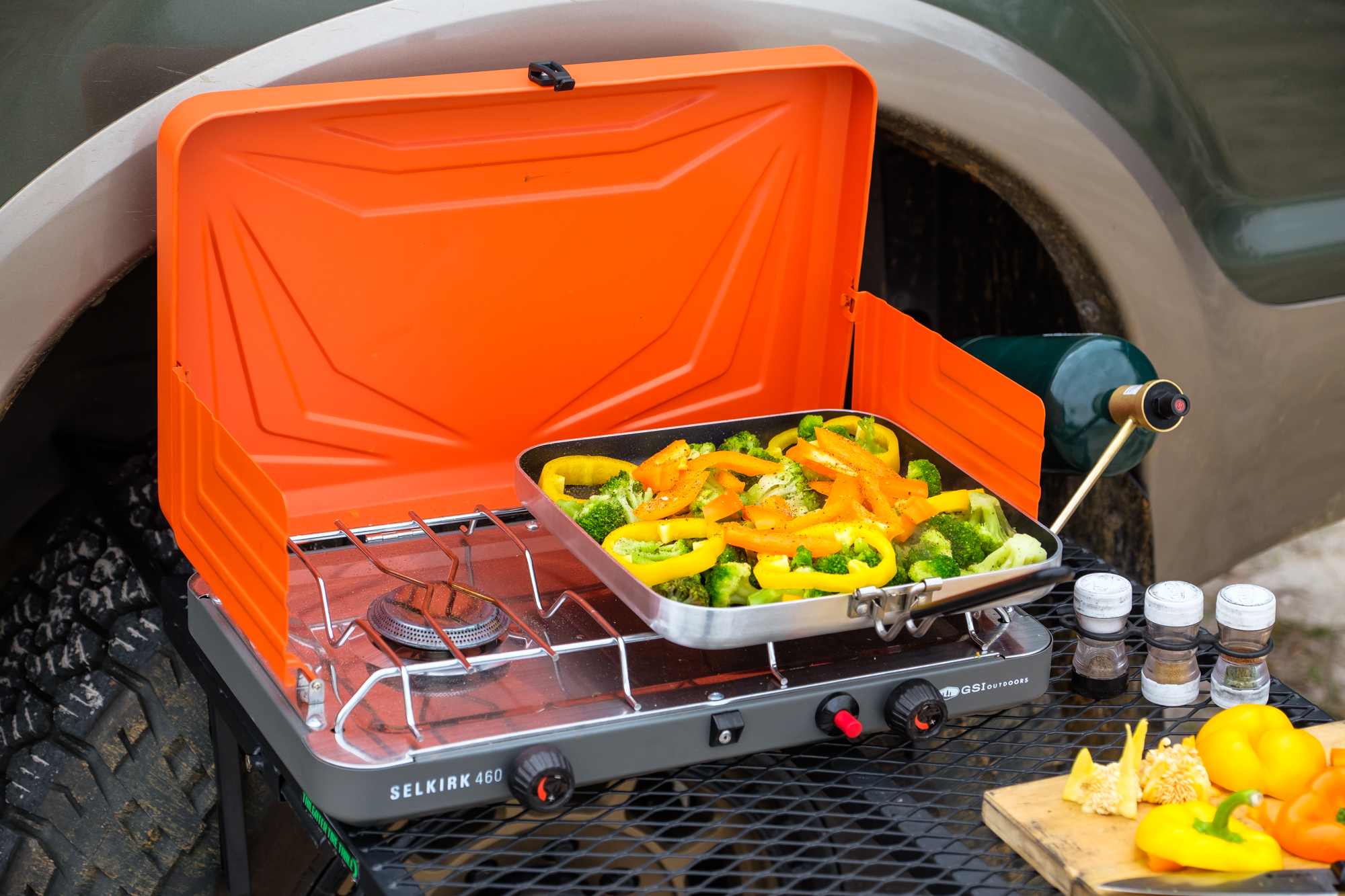I can still remember purchasing my first GSI Outdoors kitchen kit. It replaced the hodgepodge of pots, pans, plates, and cups that had been consuming cargo space in a giant box with one sleek set of nesting cookware. The space savings was spectacular, but so was the reasonable price. Ever since then, I have had a love for GSI products, so when a chance to review their Selkirk 460 stove came up, I jumped on it.
The Stove at a Glance
Like most of GSI’s camping goods, the Selkirk walks the line between price and performance. It costs $99, which is about what we’d expect for a mid-level camp stove but offers two 10,000 BTU stainless steel burners along with features like a push-button piezo ignition system, wraparound windscreens, and an integrated carry handle. It’s built from powder-coated steel, with a stainless steel and nickel-chrome surface below the burners for easy cleaning. It measures in at 18.3 x 12.9 x 3.8 inches and weighs 8 pounds 5 ounces.
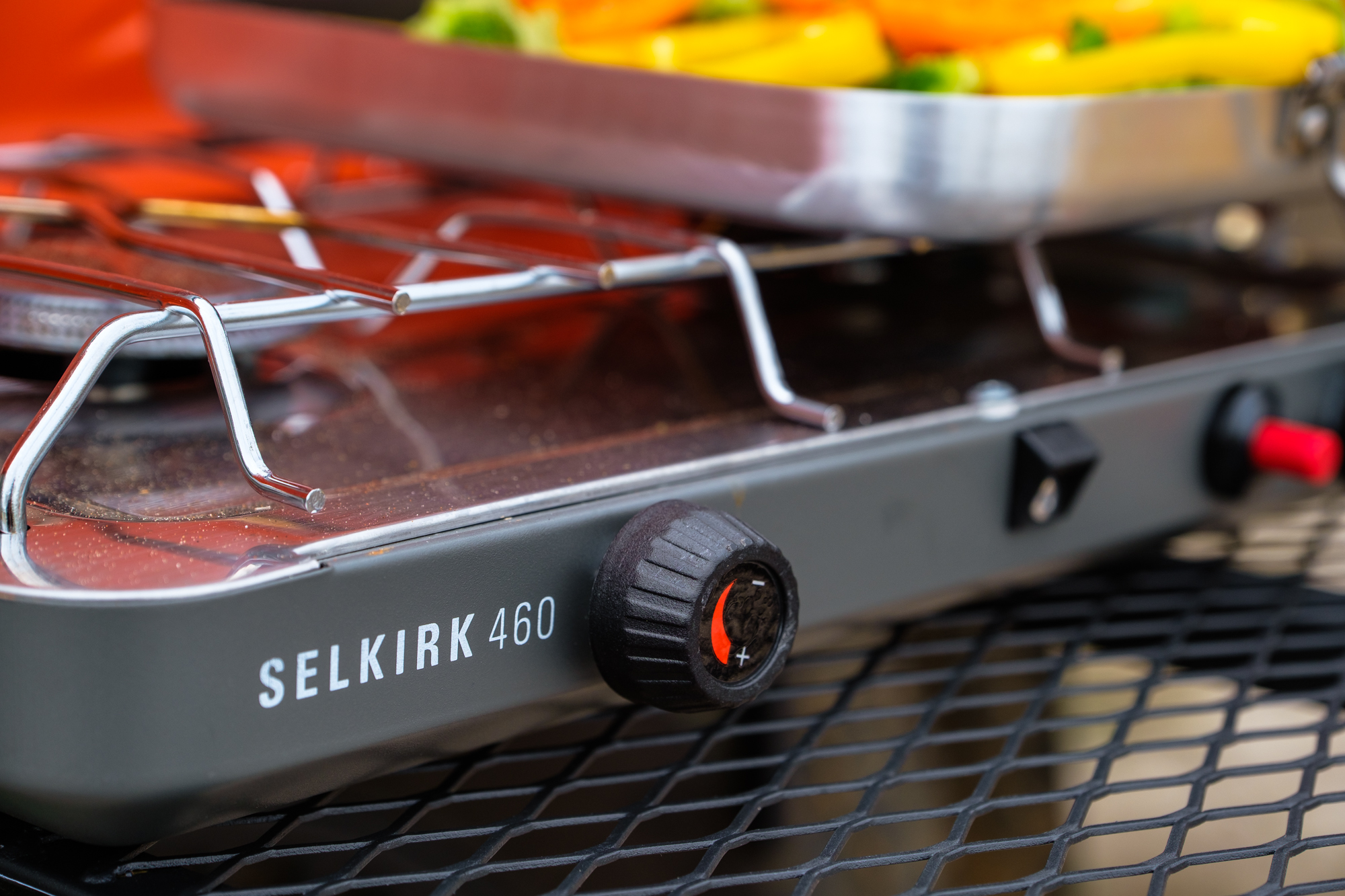
Our Impressions
The immediate appeal of the Selkirk 460 for me was its size and weight. At 18.3 inches long, it is 3 to 5 inches shorter than many of its competitors, and quite a bit narrower and more compact when collapsed as well. For comparison, the Coleman Triton InstaStart 2-Burner measures 23 x 12 x 7 inches to the GSI’s 18.3 x 12.9 x 3.8 inches. It also weighs just 8 pounds, where the Coleman tips the scales at 11 pounds. Are three pounds going to make a big difference to your vehicle’s payload? Certainly not, but every pound counts when you’re lifting a chuck box several times a day.
Unfortunately, the smaller size will limit what you can fit on the stove. GSI states that the Selkirk’s stovetop has room for any two of their Bugaboo Camper 2-liter or 3-liter pots and a 9-inch frying pan to sit side by side, but in my experience, that’s a tight fit. If you like to sauté vegetables or flip pancakes by tossing the pan, you may consider the larger Selkirk 540.
The stove’s lightweight materials also contributed to one of the 460’s only issues. On corrugations and bumps, I found that the stove’s metal components managed to rub together now and then to create an annoying squeak. While some packing magic may alleviate the issue, this stove would definitely be going in a box surrounded by towels in the back of my rig.
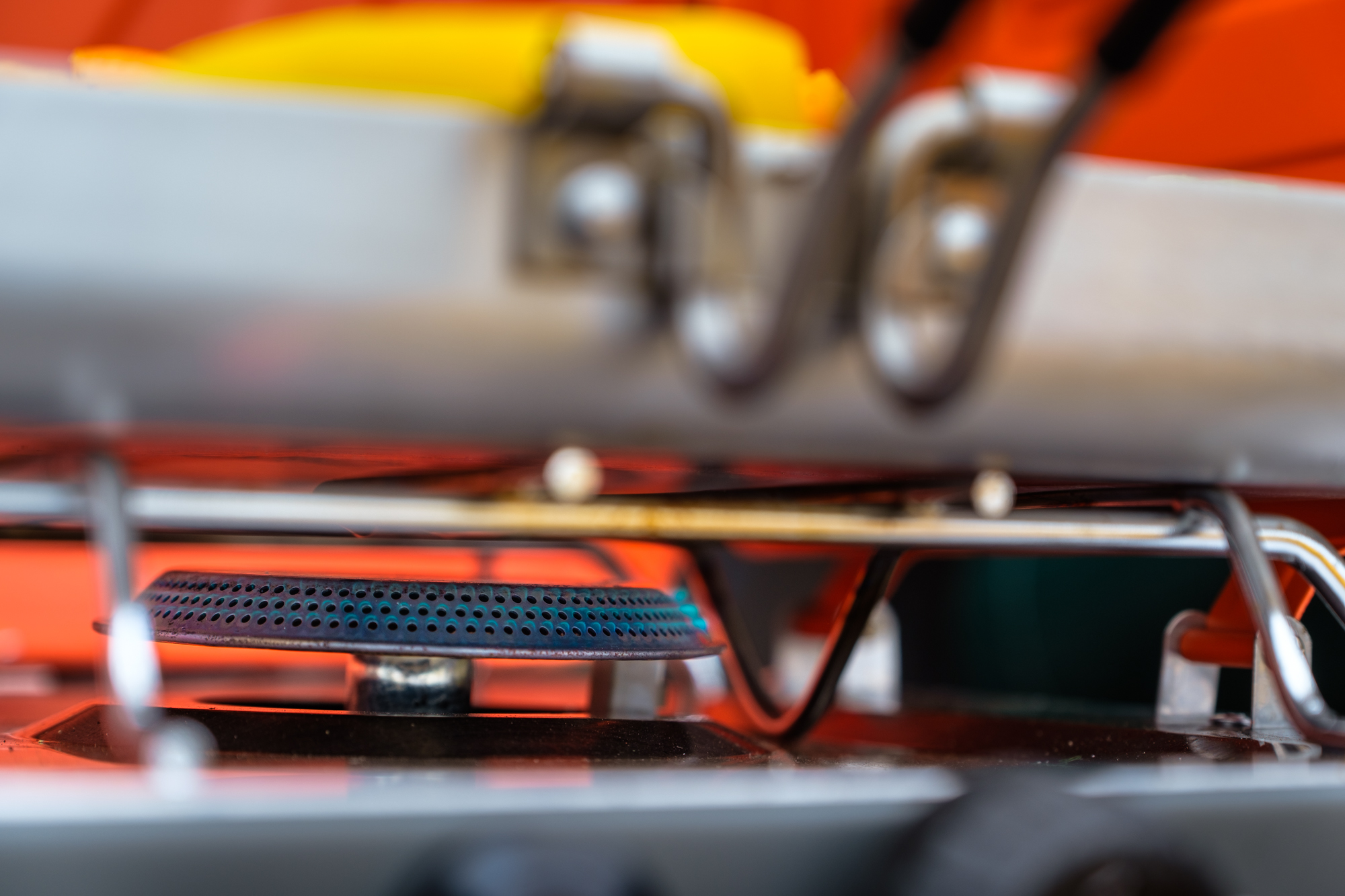
When it comes to cooking, though, things started looking up for the 460. The Selkirk’s two 10,000 BTU burners were more than adequate for any task we threw at them, and cooked food with an even heat pattern on pots and pans. I was also delighted to find that the fuel flow valves were much easier to control than on other stoves I’ve tested. If needed, I could really turn up the heat to sear, while still easily reducing the heat on another dish down to a simmer. The wind guards’ excellent protection against disruptive airflow only increased my confidence while cooking further, making the experience far more enjoyable. My only complaint with the cooking systems in the stove was the piezo ignition. It would often take repeated clicks to ignite, and while it never failed to ignite the burner, it could be a bit finicky at times.
My final test was a shakedown to see if the plastic lock would keep the stove closed. It worked well and seemed quite durable, but I do wonder about its longevity in cold environments. As many of us have experienced, plastic can become brittle with frequent bending in low temperatures, and this lock flexes with every open and close cycle. Fortunately, I have had fantastic experiences with GSI customer service in the past, so I suspect fixing the problem wouldn’t be an issue even if the latch were to fail in the future.
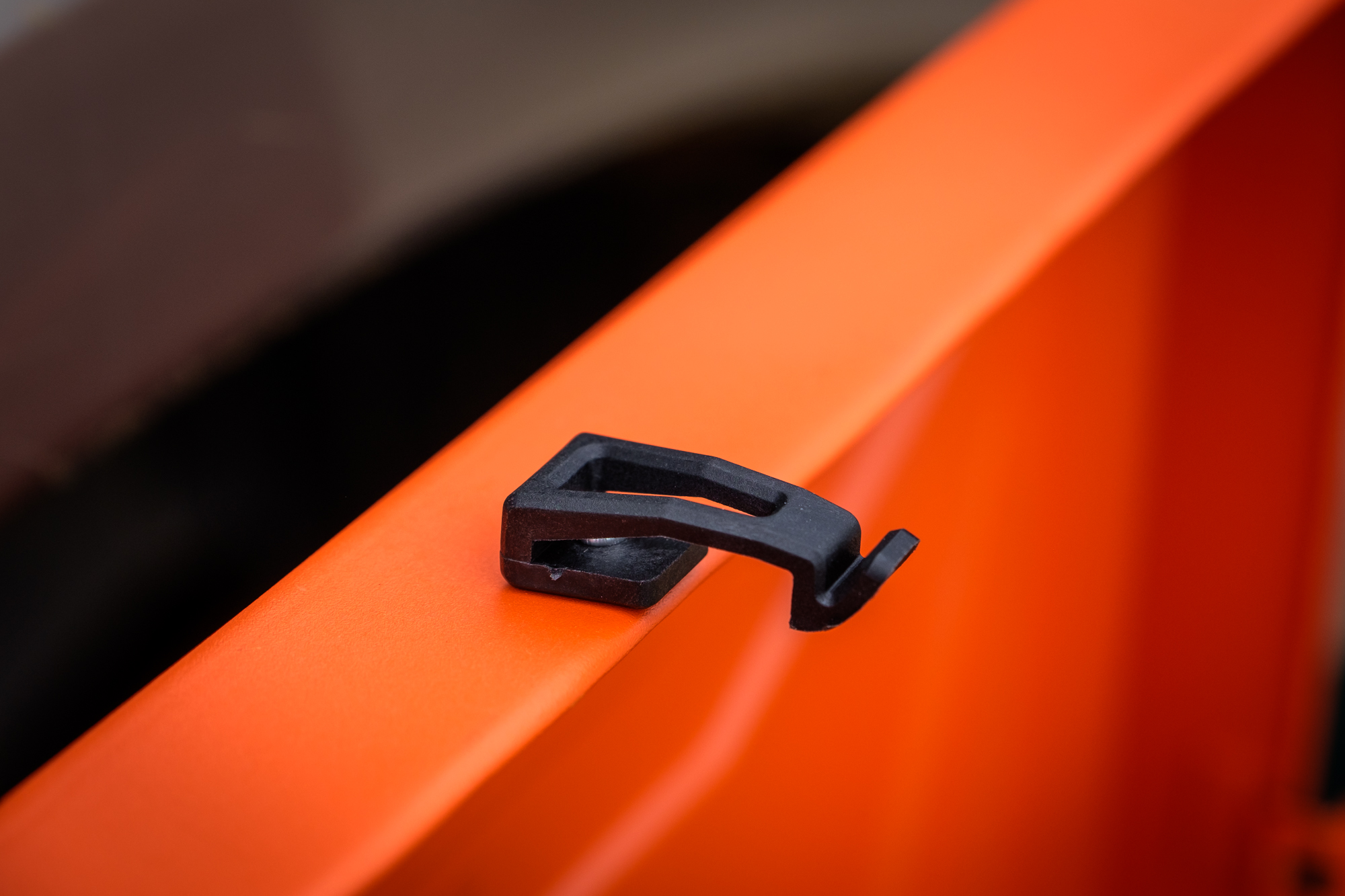
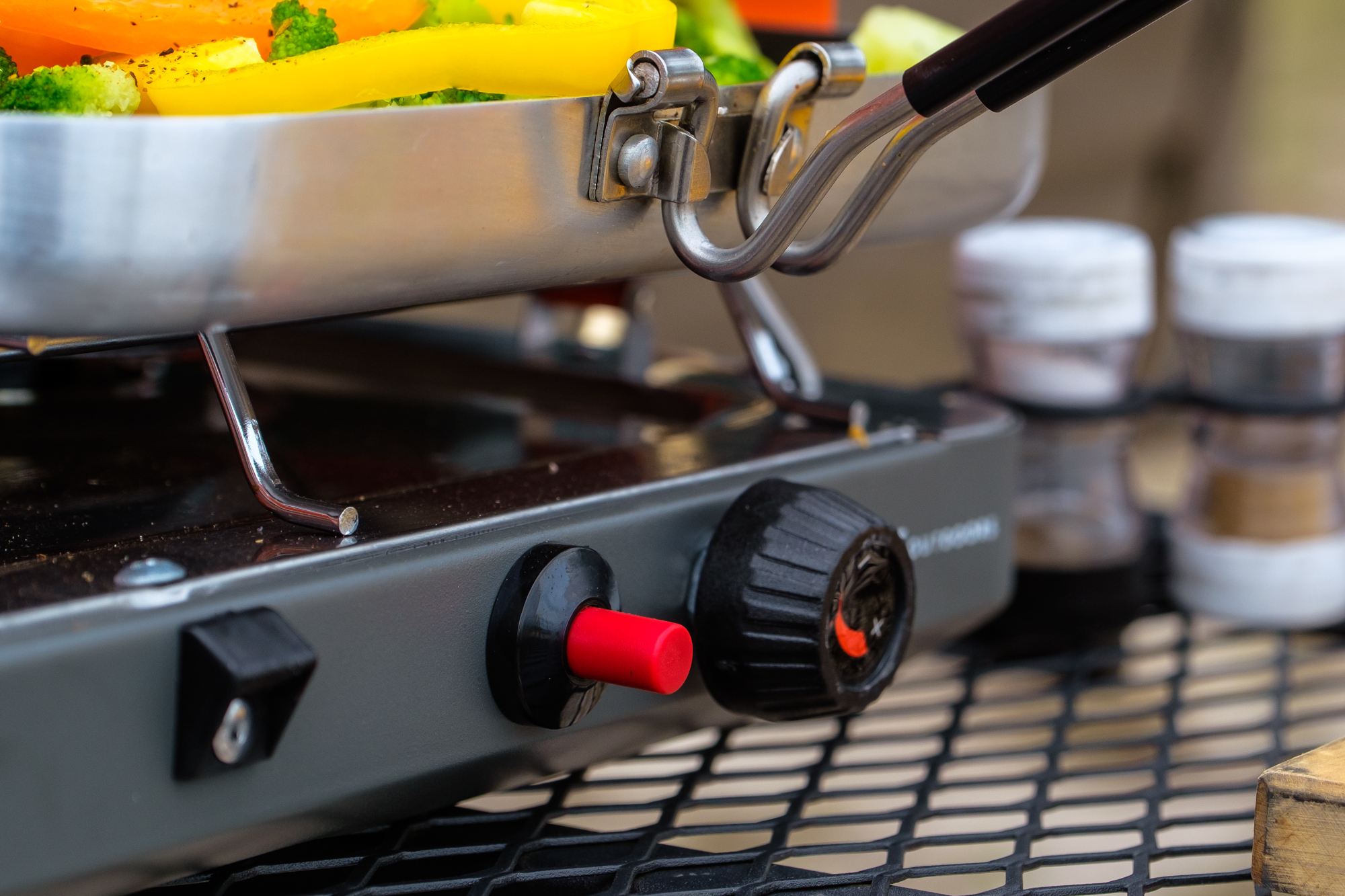
Conclusions
All things considered, the Selkirk 460 is a good stove. While the rattling may annoy me off road, the excellent heat control along with the lightweight design and thorough wind protection help offset it. If you’re looking for solid cooking performance without the price, the GSI Selkirk 460 could be a good buy.
To learn more, check it out on GSI Outdoors’ website here.
